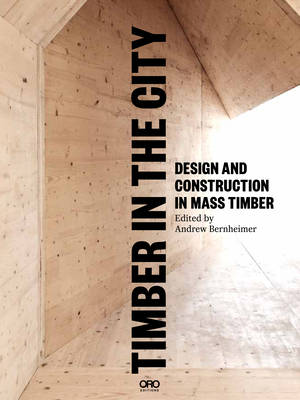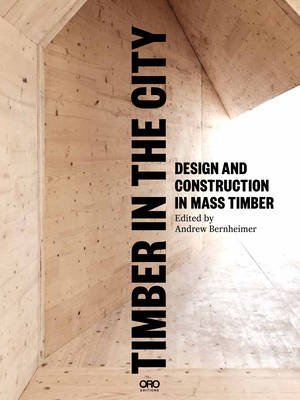
- Afhalen na 1 uur in een winkel met voorraad
- Gratis thuislevering in België vanaf € 30
- Ruim aanbod met 7 miljoen producten
- Afhalen na 1 uur in een winkel met voorraad
- Gratis thuislevering in België vanaf € 30
- Ruim aanbod met 7 miljoen producten
Zoeken
€ 48,95
+ 97 punten
Omschrijving
As synthetic materials and mutant and hybrid concoctions attain prominence in our daily lives--in our handheld devices, cooking utensils, vehicles, even things as simple as our shopping bags--the design and construction industries have instead re-embraced the familiar, the conventional--wood, which has regained prominence through innovations in engineering and construction methodologies. Technology is now commonly used--and often (though not always) affordably used--to cut, perforate, assemble, erect, and even fabricate materials in a manner not previously possible. Wood is one such material, and Timber in the City documents both the imaginings of those in the nascence of their education and practice and the executed work of design professionals at the leading edge of architecture. These designers, regardless of the duration of their immersion in the field, have imaginatively rethought the means by which we build and the methods by which we define space merely through differing deployments of a familiar building material.
Specificaties
Betrokkenen
- Auteur(s):
- Uitgeverij:
Inhoud
- Aantal bladzijden:
- 224
- Taal:
- Engels
Eigenschappen
- Productcode (EAN):
- 9781941806807
- Verschijningsdatum:
- 15/06/2015
- Uitvoering:
- Paperback
- Formaat:
- Trade paperback (VS)
- Afmetingen:
- 165 mm x 218 mm
- Gewicht:
- 544 g

Alleen bij Standaard Boekhandel
+ 97 punten op je klantenkaart van Standaard Boekhandel
Beoordelingen
We publiceren alleen reviews die voldoen aan de voorwaarden voor reviews. Bekijk onze voorwaarden voor reviews.








